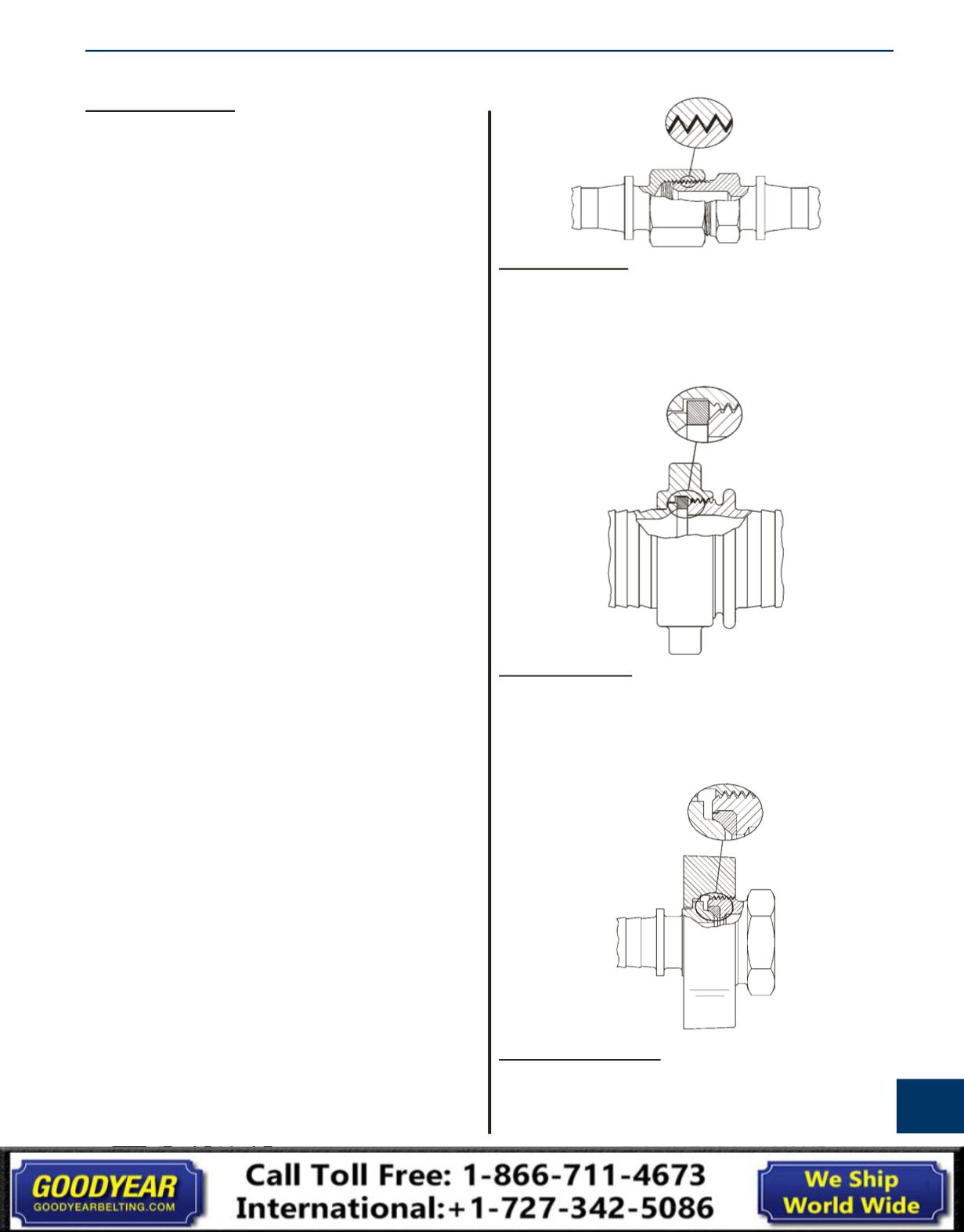

Safety &
Technical
P
943
DPL418
877.963.4966 •
dixonvalve.comP
Thread Sealing Tips
Thread Seal Type
•
A seal is obtained by applying a sealant to the male
thread before engaging.
•
The sealant is used to prevent spiral leakage.
•
Thread tape or paste is the preferred sealant in this type of
application.
•
Please refer to page 902 for thread tape options.
Washer Seal Type
•
A seal is obtained when the male thread is tightened down
onto the washer of the female assembly.
•
The washer should be inspected regularly and replaced as
needed to prevent leakage.
•
Please refer to pages 72 and 40 for replacement washers.
Mechanical Seal Type
•
A seal is obtained through metal to metal contact or metal
to seal contact, i.e. JIC couplings (page 511) have a metal
to metal seal. Boss™ Ground Joint couplings (pages 67-69)
have a metal to seal contact (shown above).
•
The couplings should be retightened as needed to prevent
leakage.
Thread Sealing Tips
Sealing NPT threads can be an exasperating experience
if certain techniques are not followed. The following tips will
help alleviate many common problems in thread sealing:
1. Always use some type of sealant (tape or paste) and apply
sealant to male thread only. If using a hydraulic sealant,
allow sufficient curing time before system is pressurized.
2. When using tape sealant, wrap the threads in a clock-
wise motion starting at the first thread and, as layers are
applied, work towards the imperfect (vanishing) thread.
If the system that the connection being made to cannot
tolerate foreign matter (i.e. air systems), leave the first
thread exposed and apply the tape sealant as outlined
above.
3. When using paste sealant, apply to threads with a brush,
using the brush to work the sealant into the threads. Apply
enough sealant to fill in all the threads all the way around.
4. When connecting one stainless steel part to another
stainless steel part that will require future disassembly,
use a thread sealant that is designed for stainless steel
(see page 787). This stainless steel thread sealant is also
useful when connecting aluminum to aluminum that needs
to be disconnected in the future. These two materials gall
easily, and if the correct sealant is not used, it can be next
to impossible to disassemble.
5. When connecting parts made of dissimilar metals (i.e. steel
and aluminum), standard tape or paste sealant performs
satisfactory.
6. For sizes 2" and below, tape or paste performs
satisfactory. When using thread tape, four wraps (covering
all necessary threads) is usually sufficient.
7. For sizes 2½" and above, thread paste is recommended.
If thread tape is used, eight wraps (covering all necessary
threads) is usually sufficient. Apply more wraps if
necessary.
8. For stubborn to seal threads, apply a normal coating of
thread paste followed by a normal layer of thread tape.
9. For extremely stubborn to seal threads, apply a normal
coating of thread paste followed by a single layer of gauze
bandage followed by a normal layer of thread tape.
Caution!
When this procedure is done, the connection becomes
permanent. Extreme measures will be necessary to
disconnect these components.
All other measures to seal
the threads should be explored prior to use of this technique.
10. Over-tightening threads can be just as detrimental as
insufficient tightening. For sizes 2" and below, hand tighten
the components and, with a wrench, tighten 3 full turns.
For sizes 2½" and above, hand tighten the components
and, with a wrench, tighten 2 full turns.
Thread Information


















